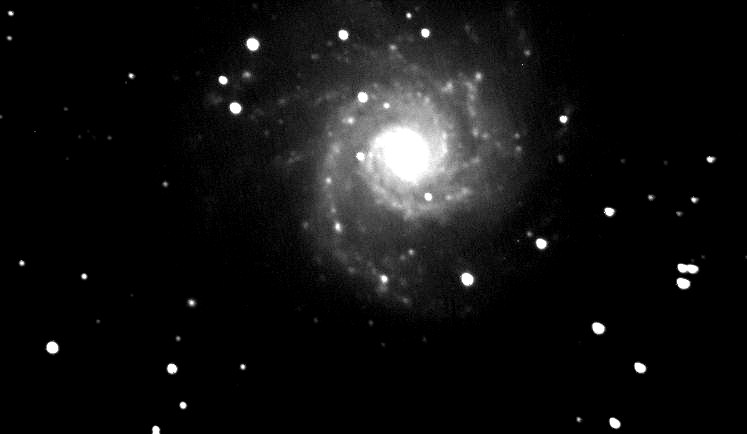
M74
M74 is among the first "Spiral Nebulae" recognized, being a very conspicuous spiral and a prototype of a grand-design Sc galaxy. Its distance may be about 30 to 40 million light years. Its spiral arms reach out to cover a region of more than 10 minutes of arc in diameter, corresponding to roughly 95,000 light years, or about the same size as our Milky Way. The remarkably symmetric appearance over the whole galaxy is probably caused by the global phenomenon of density waves sweeping around M74's gaseous disk, probably induced by gravitaional interaction with neighboring galaxies. When gas clouds orbiting within the disk encounter such density waves, they are accelerated into the spiral shaped wave crest, and then slowed down, so that they converge toward the spiral arm, enhance the density wave. Moreover, collisions and mergers of neighboring clouds occur, which are thought to induce the observed starbirth activity along the spiral arms. M74 is probably the chief member of a very small physical group of galaxies, which includes the peculiar SBa barred spiral NGC 660, the peculiar Sm galaxy UGC 891 (of a mixed type between spirals and irregulars), and the irregulars UGC 1176, UGC 1195, and UGCA 20. Two supernovae have been discovered in M74:
 |
Taken November, 2007, with the C-14 and the Meade focal reducer. 15 minutes exposure |